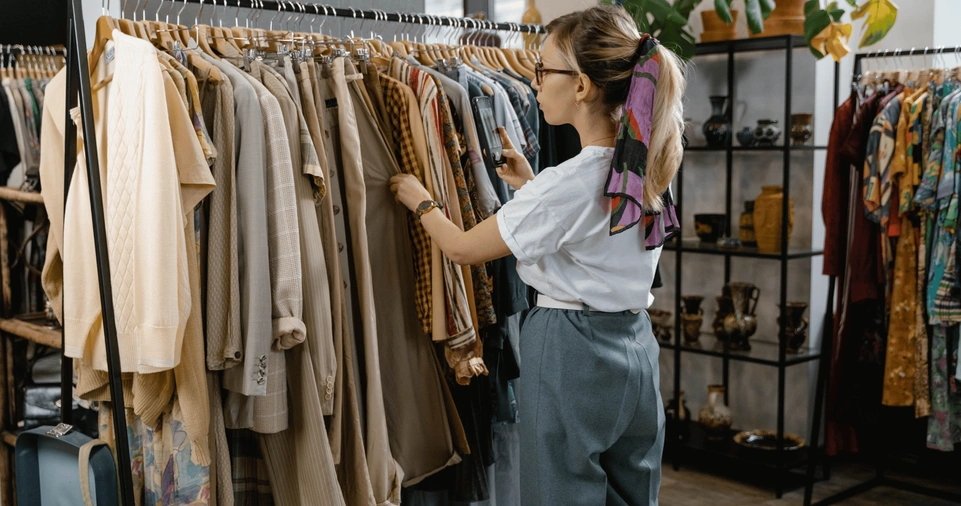Choosing clothes that flatter your body type isn’t about following fashion trends—it’s about understanding your shape and dressing in a way that enhances your natural features.
Whether you’re curvy, athletic, petite, tall, or somewhere in between, there’s a science and art to selecting garments that work for you. This guide will walk you through body types, styling strategies, and wardrobe essentials tailored to your shape.
Understanding Your Body Type
To dress effectively, the first step is identifying your body type. Here are the five most commonly referenced body shapes:
| Body Type | Description | Goal |
|---|---|---|
| Hourglass | Balanced bust and hips with a well-defined waist | Highlight the waist and maintain proportion |
| Pear | Hips are wider than the bust | Balance top and bottom by drawing attention upward |
| Apple | Heavier around the midsection with slimmer limbs | Define the waist and elongate the torso |
| Rectangle | Bust, waist, and hips are fairly uniform in measurement | Create curves and add definition |
| Inverted Triangle | Broad shoulders and narrow hips | Soften the shoulders and add volume to the lower body |
Choosing the Right Clothes for Your Shape

Hourglass Body Shape
Best Styles:
- Wrap dresses and belted styles
- High-waisted pants and skirts
- Fitted tops and bodycon dresses
Avoid:
- Baggy, shapeless clothes
- High necklines that obscure your bust line
Style Tips:
Show off your narrow waist with cinched silhouettes. Stretchy fabrics that follow your curves without clinging too tightly work best.
Pear Body Shape
Best Styles:
- A-line skirts
- Off-the-shoulder tops and boat necks
- Structured jackets that define the shoulders
Avoid:
- Skinny jeans without balance on top
- Tops that cut off at the widest part of the hips
Style Tips:
Opt for bold patterns or bright colors on top, and stick to darker, solid hues on the bottom to balance proportions.
Apple Body Shape
Best Styles:
- Empire waist dresses
- Tunics and flowy tops
- Straight-leg or bootcut pants
Avoid:
- Tight-fitting tops around the midsection
- Belts that cinch at the waist
Style Tips:
Focus on creating a vertical line using long cardigans or open blazers. V-necklines can elongate your upper body.
Rectangle Body Shape
Best Styles:
- Peplum tops
- Ruffled or detailed blouses
- Flared skirts and dresses
Avoid:
- Straight-cut dresses and boxy tops
- Minimalist cuts that lack structure
Style Tips:
Add dimension by layering and selecting pieces with detailing around the bust or hips.
Inverted Triangle Body Shape
Best Styles:
- V-neck tops
- Wide-leg pants and A-line skirts
- Soft fabrics that drape over shoulders
Avoid:
- Shoulder pads and puff sleeves
- Tapered pants that make shoulders look broader
Style Tips:
Go for simple, clean lines on top and build visual weight on your lower half with prints, volume, and texture.
Fabrics, Patterns, and Colors That Work
Your body shape isn’t the only consideration. Fabric choice, patterns, and colors all play a role in how flattering your outfit looks.
| Element | Tips for Flattery |
|---|---|
| Fabric | Lightweight fabrics for layering; structured fabrics to enhance shape |
| Pattern | Vertical stripes to elongate; smaller prints for petite frames |
| Color | Dark colors recede (slimming); light colors highlight and emphasize |
Wardrobe Essentials for Every Body Type
Regardless of your shape, certain versatile pieces flatter almost everyone:
- A tailored blazer
- Dark-wash jeans
- Wrap dress
- A-line skirt
- Classic white button-down
- Well-fitted black trousers
- A structured handbag to add polish
These basics serve as building blocks for a variety of outfits, adaptable to different shapes and personal styles.
Dressing for Height and Proportions

Body type isn’t just about shape—it also includes height and limb proportions. Here’s how to style accordingly:
Petite Frames:
- Choose high-waisted bottoms to elongate the legs
- Avoid overly large prints or voluminous layers
- Opt for vertical lines and monochrome outfits
Tall Frames:
- Embrace wide belts and long layers
- Use color blocking to break up length
- Experiment with bold patterns and textures
Long Torso, Short Legs:
- High-rise pants and cropped jackets
- Avoid low-slung bottoms
Short Torso, Long Legs:
- Mid-rise bottoms and longer tops
- Use belts at the hipline rather than waist
Common Style Mistakes to Avoid
- Wearing clothes that are too tight or too loose
- Ignoring tailoring—off-the-rack doesn’t fit everyone
- Following trends blindly rather than dressing for your shape
- Over-accessorizing or clashing patterns
- Using color and proportion incorrectly
Tips for Trying On and Shopping Smart
- Always try on multiple sizes—even within the same brand
- Bring shape-wear or appropriate undergarments for fittings
- Move around in the clothes to check for comfort and fit
- Shop with a list to avoid impulse buys
- Invest in tailoring for your most-used pieces
ALSO READ: How to Write a Simple Business Plan: A Step-by-Step Guide
Conclusion
Dressing well is not about achieving a specific body ideal—it’s about highlighting what you already have and feeling confident in your own skin.
Understanding your body type gives you the power to shop smarter, dress better, and express yourself more clearly through fashion.
By learning the basic principles of fit, proportion, and style alignment, you can build a wardrobe that not only flatters but also functions.
Fashion should work for you—not the other way around. With the right strategies, anyone can look stylish and put-together, regardless of size, shape, or trend.